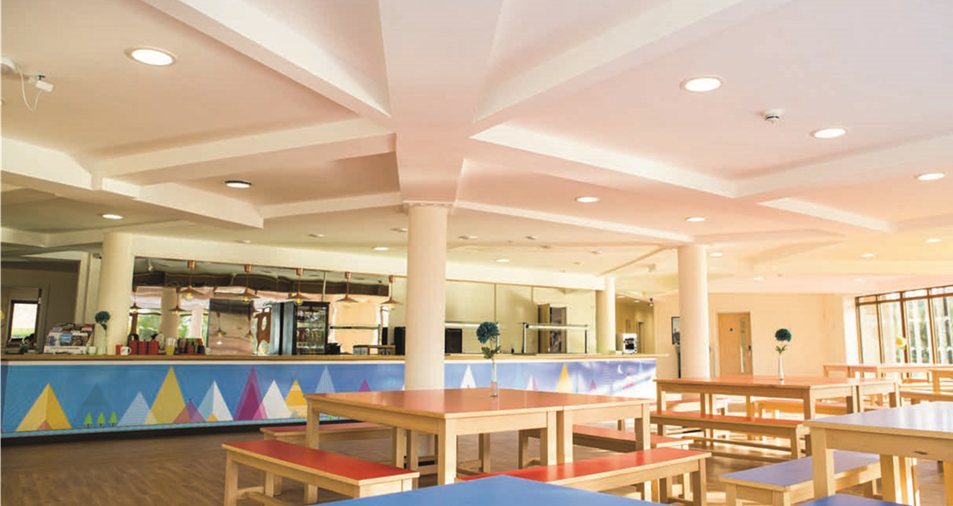Colour has long been a key focus of interior design, and recent years have seen more emphasis on its use in public buildings including schools.

With the psychology of colour increasingly the focus of research for psychologists, and many leading paint manufacturers investing in creating palettes based on this research, it’s no surprise that the planned use of different colours is making its way into the classroom. And it’s not just the use of colour which can benefit students: shapes, particularly in early years education, are also beneficial.
Incorporating colours and shapes into school design – whether for a new building or refurbishment – can not only contribute to creating the ideal environment for learning, but can also be used as a method for implementing Covid-secure measures following the return to the classroom.
Lee Hartley, chief operating officer at Novus Property Solutions, a property maintenance company, says: “Recent years have seen more recognition of the impact that colours can have on mood and behaviour, which has resulted in its increased application in school design. In collaboration with its education sector clients, Novus has designed and carried out work on a number of school buildings, extensions and refurbishments which consider the subconscious influence colour will have on users.
“For example, certain shades of blue are soothing and are therefore best used in calmer environments such as the school library, while bolder colours like red and yellow encourage excitement and creativity. By drawing on these connotations, those working on school designs can utilise colour in a way that inspires young people and assists teachers.”
Not only should the use of colour be carefully considered in the design of education settings, but incorporating irregular features through a variety of shapes and lines can in itself act as an inspiring teaching tool, says Hartley.
Particularly valuable in early years education, unusual room layouts can fire up the imaginations of young people. As a result of this, learning environment designs are increasingly being pushed in directions which don’t conform to traditional norms.
Novus has undertaken several refurbishment projects which increasingly incorporate the use of shapes within the education sector, and the contractor facilitates a proactive and inclusive consultation process to ensure end-users have an input into the future legacy of the building. And by working in partnership with the full supply chain – from architects, interior designers and landscapers to those supplying furniture, carpets and wall coverings and coatings – contractors are able to implement atmosphere and wayfinding in creative ways.
As disruptive as the pandemic has been on young people with schools temporarily closing, it provided contractors with an opportunity to carry out refurbishment works while students were at home, which will prevent further disruption now that schools have reopened.
But, says Hartely, it’s important to still consider the impacts that Covid-19 restrictions may have on education settings going forward. The use of colour and shape can be valuable in new ways when incorporated into school design post-pandemic, and should be an important consideration when it comes to new buildings and refurbishments.
The planned use of colour and shape in school design provides an ideal way of implementing rules relating to continued measures, particularly for younger students. For example, bold colours are ideal for highlighting certain areas of a room such as handwashing stations, while the clever use of shapes can be used to discourage crowding.
By allowing designers to innovate with the use of colour and shape in the education sector, local authorities are not only encouraging an environment that is conducive to learning, but they are also adapting to post-pandemic measures in a way that is well-suited to young people.